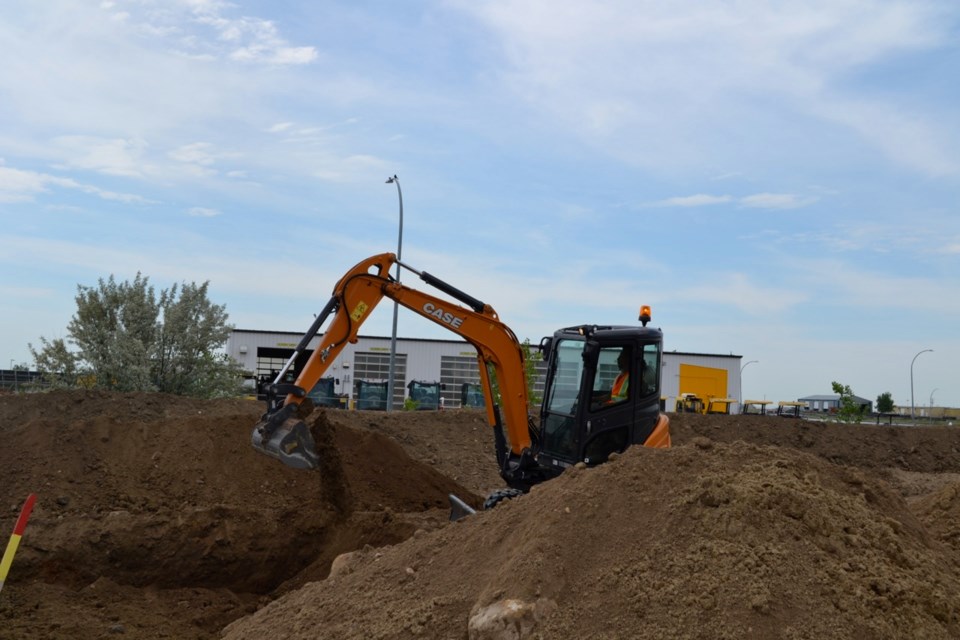The five students who are part of the first heavy equipment operator (HEO) course at the Southeast College’s Estevan campus have finished their first session in the classroom, and now they’re in the midst of spending six weeks learning on equipment outdoors.
The tasks the students carry out each day are highly visible, because of the equipment they’re using, and have created a lot of interest.
And it’s more than just a class where students pick up a valuable skill; it’s also going to leave a legacy for the city’s transportation.
As part of the class, the students are building the King Street Connector Road, as part of an agreement between the Southeast College and the City of Estevan, that will connect King to Nesbitt. The agreement between the college and the city calls for it to be completed in two years.
“We started the road the last time we had an HEO program, which was a few years ago,” said Sheena Onrait, the manager of marketing and communications for the college.
They didn’t get very far, but they only had one class. Now the college has decided to develop its own curriculum and program.
“We’re very appreciative that we get to finish the project we started. The city’s a great partner to have, especially for a job like this,” said Onrait.
The location is perfect as well, because it is close to the college, and the students who are currently part of the classroom cohort can drive by the site every day to see what the students are learning.
Lead instructor Shane Dawson said the city is providing the fuel for the project. And the city understands that the HEO program isn’t just about building a road. It’s also a training ground for the students.
“I’m very happy and impressed with the students, the efforts. They’re all coming here to learn. They’re excited about it. We get excited every day. It’s fun to come here and overcome fears and challenges.”
They have a variety of assignments and tasks to know besides road construction.
Pointing to a student working on a garage pad, he said: “They have 15 assignments for each piece of equipment. So his assignment is the garage pad. He digs out his garage pad. I come and see it, I mark it, evaluate the depth and how he did.”
At the end of every assignment, they refill the dirt so the next person can come and complete the task.
They have been learning what they could do within industry, like powerline digs, water or sewer digs, sloping and more.
All students are also able to work on the road construction project.
When they arrived at the site last month, the first task was to remove the topsoil, and get down to the sand and gravel that can be used appropriately.
“We have enough topsoil here to do one-foot lifts on a thousand, 1,000 acre farms. There’s so much topsoil there you can see it’s 70 feet high,” said Dawson.
People are invited to drive by the site to see what the students are doing, but they can’t enter the site without clearance.
Dawson pointed out that students follow strict rules and regulations, just like they would on a jobsite.
“We meet or exceed all expectations. We’re under strict rules and guidelines, and everything is safe and by the book,” said Dawson.
The next two cohorts will have eight students and they will have enough equipment for everybody, so that they can work on the road, and learn new skills, like sloping, trenching, basements, loading trucks, how to spot trucks and how to back in.
“They’ll be very well prepared to help out in the community and around Saskatchewan as heavy equipment operators,” said Dawson.
Partners for the project are Redhead Equipment, Turnbull Excavating and the Southern Plains Co-op. Onrait said they appreciate the partners they have, because it’s nice to see support for the college.
Interest for the HEO program has been high, since it’s one of a kind in Saskatchewan in terms of its 12-week length, with six in the classroom and six more outside.
“A more lengthy program is always an advantage for the students, because they have more time in the classroom and more time on the site,” she said.




